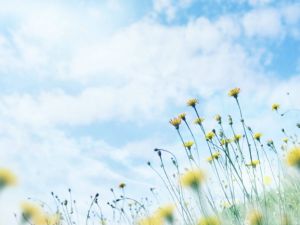简单的镇江英语导游词1 Zhenjiangmuseumisacomprehensivemuseumoflocalhistoryandart.Itwasfoundedin1958.Thesiteof下面是小编为大家整理的2023年简单镇江英语导游词,菁选3篇,供大家参考。

简单的镇江英语导游词1
Zhenjiang museum is a comprehensive museum of local history and art. It was founded in 1958. The site of the museum is the former British Consulate, covering an area of 11700 square meters. Five East Indian style buildings are built on the mountain. In 1995, a cultural relics storehouse of 1780 square meters was built, covering an area of 5456 square meters. In 1996, it was approved by the State Council and announced as a national key cultural relics protection unit. In this art palace, there are more than 30000 cultural relics from the stone age to the Ming and Qing Dynasties and 100000 ancient books. Among them, there are one Chinese treasure level cultural relic, more than 70 national first-class cultural relics and more than 300 second-class cultural relics. The collection features bronze wares of the Western Zhou Dynasty, celadon wares of the Six Dynasties, gold and silver wares of the Tang, song, yuan and Ming Dynasties, and calligraphy and painting of the Ming and Qing Dynasties. These treasures are shining with the wisdom and civilization of the Chinese nation, showing the historical development of the ancient city of Zhenjiang.
The site of Zhenjiang Museum, the former British Consulate, is located at the foot of Yuntai mountain. It is a group of buildings with East Indian style. After the second Opium War, the Qing government and British imperialism signed the "Tianjin treaty" in 1858, and Zhenjiang was opened as a trading port. After the failure of the Taiping Heavenly Kingdom in 1864, the British imperialists began to build consulates on Mount Yuntai.
In 1889, the British patrol beat up Chinese hawkers, which caused great indignation of the people in Zhenjiang, and then burned the British Consulate. The incompetent Qing government compensated 40000 taels of silver for the reconstruction, which was completed in 1890.
In October 1933, the British Consulate in Zhenjiang returned to the hands of the Chinese people, ending the privileges of British imperialism in Zhenjiang.
It has been used as the site of Zhenjiang museum since 1962.
In 1982, it was announced by Jiangsu Provincial People"s government as a key cultural relic protection unit of modern historical relics and revolutionary memorial buildings.
In 1996, it was announced as a national key cultural relics protection unit by the State Council. In recent years, the State Administration of cultural relics and the provincial and municipal governments have repeatedly allocated funds for maintenance.
The former site of the British Consulate in Zhenjiang is not only the historical evidence of the corruption and incompetence of the Qing government and the invasion of China by British imperialism, but also the historical witness of the Chinese people"s brave resistance to imperialist aggression and oppression.
简单的镇江英语导游词2
Dear tourists, at the intersection of the Yangtze River and the Beijing Hangzhou Grand C*, there is a shining pearl, Zhenjiang, a beautiful historical and cultural city.
Zhenjiang city is located in the middle of Jiangsu Province, on the South Bank of the lower reaches of the Yangtze River. It is located at the intersection of the two golden waterways of the motherland. The Beijing Shanghai railway runs across the East and West, surrounded by mountains on three sides and facing water on one side. Since ancient times, Zhenjiang City has been an important commercial port and military strategist in the lower reaches of the Yangtze River. In Song Dynasty, it was named "Zhenjiang" because of its strong spirit and dangerous situation, which was enough to control the north and south of the river and defend the river. Since 1985, Zhenjiang has been listed as an open coastal city, an important tourist city, a national health city and a famous historical and cultural city. In 1987, Zhenjiang port, one of the top ten ports in China and the third largest port in the Yangtze River, was officially opened to foreign ships.
Zhenjiang is an ancient cultural city with a long history. According to historical records, it has a history of more than 3000 years. In the Western Zhou Dynasty, it was called Yihou fiefdom. In the spring and Autumn period, it was named Zhufang. In the Warring States period, it was called Guyang. In the Qin Dynasty, it was changed to Dantu. In the Three Kingdoms, it was also called Jingkou. In the Southern Dynasties, it was called Southern Xuzhou. In the Sui Dynasty, it was changed to Yanling County and set up Runzhou. In the third year of the reign of Emperor Huizong of Song Dynasty (1113), Runzhou was promoted to Zhenjiang Prefecture, the name of which is still used today.
Zhenjiang has a unique geographical location and is dee* affected by the marine climate. It is warm and humid all the year round, with an average annual temperature of 15. The annual average precipitation is more than 1000 mm. The annual average sunshine rate is 47%, and the annual sunshine hours are more than 20xx hours. The climate features are: mild and humid throughout the year, four distinct seasons; sunny and windy in spring, hot and rainy in summer, crisp and crisp in autumn, dry and slightly cold in winter; moderate precipitation throughout the year, relatively uniform seasonal distribution. This typical climate in the south of the Yangtze River is very beneficial to agricultural production and tourism.
Zhenjiang is a famous ancient city with mountains in the East, West and South and picturesque rivers in the north. "City in the mountains, mountains in the city", known as the "city forest". Zhenjiang is one of the key tourist cities in China. The city has two national key cultural relics protection units, Jiaoshan stele forest and Danyang tombs of the Southern Dynasties. The "three mountains" scenic spot in the urban area and the southern suburb scenic spot are provincial scenic spots. There are also Maoshan provincial scenic spot and Baohua Mountain Provincial mountain forest natural resources reserve near the urban area.
Zhenjiang scenic spots are rich in beauty, with the unique features of real mountains, water, ancient, cave, harbor and spring.
Mountain refers to the magnificent Jinshan, the majestic Jiaoshan, and the precipitous Beigu mountain. The three mountains have different styles and are called "the southeast of the three mountains in Jingkou";
Water refers to the water tour features composed of the Yangtze River and the ancient c*;
Ancient, refers to the ancient city style and long history and cultural relics;
Cave refers to Penggong crystal cave, Maoshan Huayang cave and other cave wonders in the suburbs;
Port refers to Xijin ancient ferry, Zhenjiang port and other ports;
Spring refers to a series of spring sites such as "the best spring in the world" in Jinshan.
There are four "world No.1" scenic spots in the urban area: Beigu mountain, the "world No.1 River and mountain", Zhongling spring, the "world No.1 River and mountain building", multi view building, and Lingyun Pavilion.
·Hanshan Temple tour guide, Zhouzhuang tour guide, Yangzhou Slender West Lake tour guide, Huai"an tour guide, Confucius temple tour guide
There are "four pagodas" with different styles: cishou Wooden Pagoda of jiangtianchan temple, Weigong iron tower of Ganlu temple, Zhaoguan stone pagoda of Xijin ancient ferry, and sengjia brick pagoda of dingshishan.
There are "four caves" full of magical colors: Jinshan Bailong cave, Fahai cave, Jiaoshan Sanzhao cave and southern suburb lotus cave.
Zhenjiang, located in the "dragon neck" position of the Yangtze River economic open belt with Shanghai as the "leader", is a central city in the Shanghai Nanjing Economic Corridor of the Yangtze River Delta. With the deepening of reform and opening up, the comprehensive green economy strength of Zhenjiang City has entered the top 50 in China. Now it has jurisdiction over Jingkou, Runzhou, Dantu County and Yangzhong, Jurong and Danyang. The city has a total area of 3779 square kilometers and a total population of over 2.63 million. The urban area is 247 square kilometers and the population is about 520000.
Since the founding of the people"s Republic of China, Zhenjiang has dredged the Grand C*, built 10000 ton berths and wharves, and is navigable to 50 countries and regions including Japan, Singapore, the United States and Canada. Railways and highways are crisscrossed into a network, extending in all directions. Nanjing airport and Changzhou airport are on the East and West wings respectively, forming a three-dimensional transportation network connecting rivers, rivers and seas, and connecting sea, land and air.
Zhenjiang"s pleasant climate makes it the best season for tourism throughout the year. With convenient transportation and complete modern communication facilities and service facilities, it has created excellent conditions for tourism development.
Tourists: Zhenjiang, a pearl inlaid in the South Bank of the Yangtze River, will greet guests from all over the world with a more charming attitude!
简单的镇江英语导游词3
Jinshan is located in the northwest of Zhenjiang City, 43.7 meters above sea level, covering an area of 41.6 hectares. Jinshan is one of the scenic spots in China since ancient times. In ancient times, Jinshan was originally an island standing in the middle of the Yangtze River, with the reputation of "a beautiful Hibiscus in the middle of the river". In the Tang Dynasty, Zhang Hu described it as "seeing in the shadows of trees and hearing the bells on both sides of the river"; in the Northern Song Dynasty, Shen Kuo praised it as "the water on both sides of the building is connected, and the sky is in the mirror in the north and South of the river". It used to be an island in the Yangtze River. Due to the "great river flowing to the East", it was connected with the land around the end of the reign of Emperor Guangxu of the Qing Dynasty (1903). There are many places of interest in Jinshan, such as lengjietai, miaogaotai, Guanyinge, Fahai cave, guxianren cave, gubailong cave, etc.
There are many places of interest in Jinshan. The exquisite and beautiful cishou pagoda stands on the top of the mountain in the northwest of Jinshan mountain, 30 meters high. It matches the whole Jinshan mountain and the Jinshan Temple just right, as if it has lifted the mountain. The brick and wood structure of the tower, up and down traffic, each floor eight sides have corridors and railings, eight sides ventilation, there are scenery, different scenery layers, Song Dynasty Wang Anshi poem: "several towers pillow layers of stone, four wall windows open face wind, suddenly see the birds fly on the ground, start startled in mid air.". Another example is the lengjietai, miaogaotai, Guanyin Pavilion, Fahai cave, guxianren cave, ancient Bailong cave and other places of interest. They are all built on the basis of rock drilling by the side of the mountain. Their ingenious design makes people admire the magical wisdom and superb art of the builders. Zhang Chuanshan, a great poet and calligrapher of the Qing Dynasty, said in his crossing the river in the snow on the 16th: "old friends, when they fold bamboo slips together, the road is not far from the river. The mellow wine steals away the snow in Jingkou, and the big sail presses the tide in Haimen. The lights in Yangzhou are hard to make the moon, and the Sheng song in Wu city is left with this flute. The wind and waves are thousands of miles away, and the two wonderful lotus flowers are Jinjiao. " Compare Jinshan to a beautiful lotus.
Jinshan has many names since ancient times. The ancients compared the Yangtze River to the perfume sea, comparing the mountain to the seven Jinshan in Huayan Jing, so it is called Jinshan. There is another saying in the book of nine regions written by Wang Cun of the Song Dynasty: Fa Hai, an eminent monk of the Tang Dynasty, came here to repair the temple for his son. He cut through thorns and thorns in the mountains every day and dug gold one day. Li Qi, a local official, rebelled against the emperor. The emperor ordered that gold be handed over to Fahai for temple restoration, and the mountain was named Jinshan. In addition, Jinshan was once called Zexin mountain, Fuyu mountain, Huofu mountain, Longyou mountain, Zijin Mountain, etc. The name of Jinshan is related to Jinshan Temple, which is built cleverly according to the mountain and has a unique architectural style. There are many buildings in the back of the temple, and the pavilions and pavilions are connected layer by layer. The mountain and the temple are integrated to form a group of ancient buildings. The scenery is spectacular and magnificent, forming a unique style of "temple wrapped mountain". Since the Song Dynasty, there has been a saying in Beijing that "Jinshan Temple wraps the mountain, Jiaoshan mountain wraps the temple.".
Jinshan is also known as "myth mountain". Every historic site on the mountain has charming myths, legends and stories. This is the origin of the well-known Chinese classical myth "the legend of the White Snake", which is widely spread among the people and adds a very charming color to this famous city. In the novel Shuo Yue Quan Zhuan, Yue Fei visited the Jinshan historic site "Qifeng Pavilion", which has a pleasant scenery. In the chapter novel water margin, Zhang Shun lies in Jinshan Temple in the night, and Song Jiang takes Runzhou city (that is, today"s Zhenjiang City) wisely. Emperor Kangxi and Emperor Qianlong of Qing Dynasty visited Jinshan many times and left many "imperial" cultural relics. There are many folk tales about Qianlong in Jinshan, which makes Jinshan more famous. Poets, calligraphers, celebrities and scholars of all ages, such as Bai Juyi, Li Bai, Zhang Hu, sun bream, Su Dongpo, Wang Anshi, Shen Tuo, Fan Zhongyan, Zhao Mengfu and Wang Yangming, visited the scenic spots and left many precious relics and popular chants. Since the Tang Dynasty, there has been an endless stream of international friends and tourists. Yang xuezhou, a Japanese painting monk in the Ming Dynasty, lived in Jinshan for two and a half years. He painted "the picture of Jinshan Longyou temple in the middle of Yangtze River in the Tang Dynasty" and other paintings about Jinshan, which are now preserved in the temple.
Jinshan, a green snail like hill, contains a lot of romantic past events and has infinite charm, attracting numerous Chinese and foreign poets and tourists. Some people say that "if you don"t go to Jinshan in Zhenjiang, you"ve never been to Zhenjiang". This has its own truth. When you visit Jinshan, you will understand the mystery. Jinshan tour route
Jiangtian Temple -- sunset Pavilion -- Guanyin Pavilion -- lengjiatai -- foyinshanfang -- Jinshan Sibao -- cishita -- gufahai Cave -- Liuyun Pavilion -- miaogaotai -- Qifeng Pavilion -- Bailong Cave -- Chaoyang Cave -- guxianren Cave -- Yudai bridge -- yudock -- GuoPu tomb -- Jiangtian temple, the first spring in the world
推荐访问:镇江 英语 简单 简单镇江英语导游词 菁选3篇 简单的镇江英语导游词1 镇江英文导游词 镇江旅游介绍导游词 镇江旅游英文介绍



